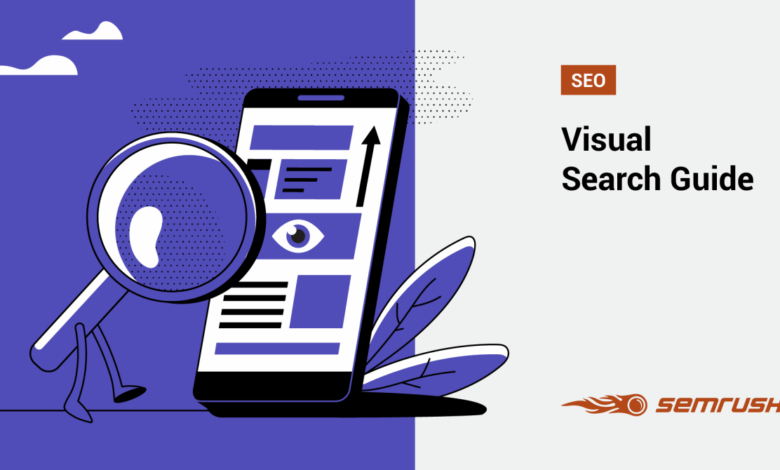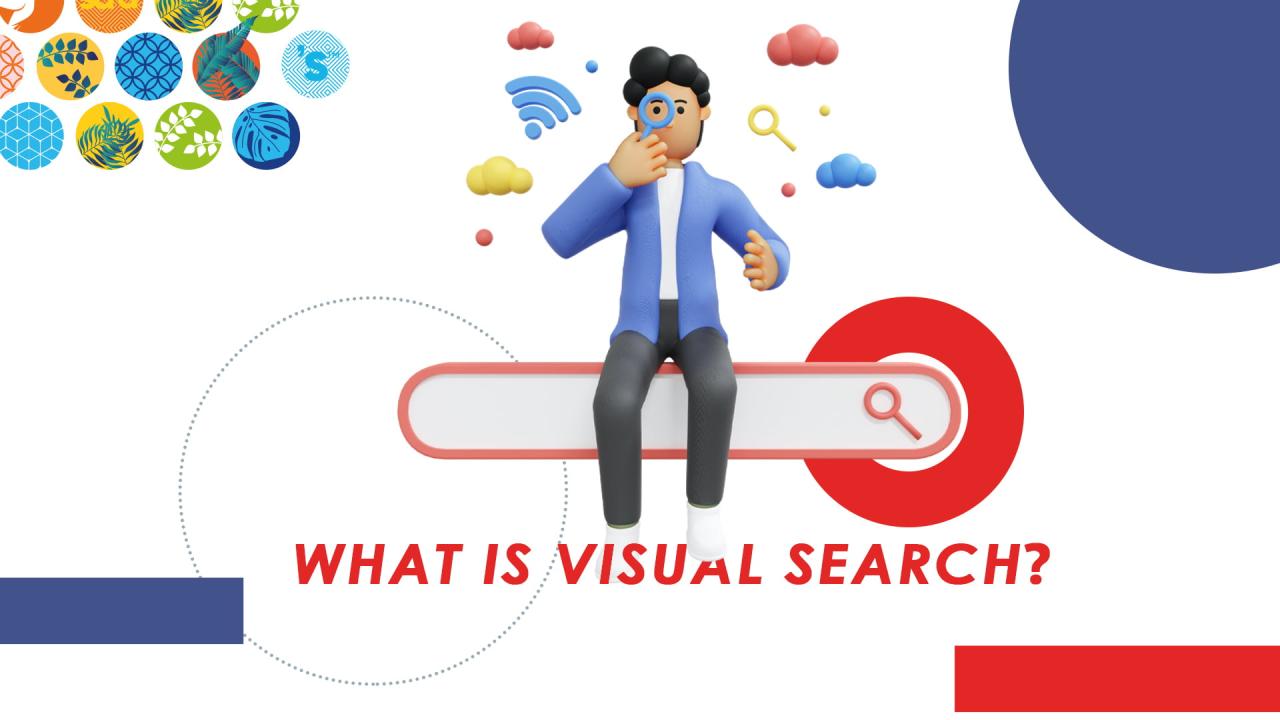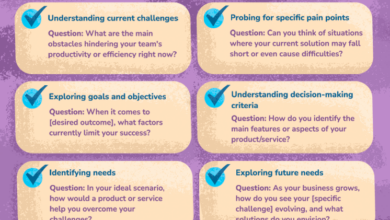
Visual Search Unveiling a New World
Visual search is revolutionizing how we interact with information. Instead of relying solely on s, this technology allows us to find what we need using images. Imagine searching for a specific piece of clothing by uploading a picture of it, or identifying a plant by snapping a photo. This innovative approach is rapidly transforming various industries, from e-commerce to medical research.
This exploration dives deep into the fascinating world of visual search, examining its core principles, applications, techniques, challenges, and future potential.
This in-depth look at visual search covers everything from defining the technology and its underlying principles to exploring real-world applications in diverse sectors like fashion and medicine. We’ll also delve into the intricacies of image recognition and matching techniques, highlighting the key challenges and limitations while discussing future trends and the evolving user experience. Finally, we’ll explore the role of visual search in enhancing accessibility for everyone.
Defining Visual Search
Visual search is rapidly transforming how we interact with information. Instead of relying solely on s, this technology allows users to find what they need by uploading images or using their own visual input. This approach offers significant advantages, especially in areas where text-based descriptions are inadequate or simply unavailable. It’s already impacting industries from e-commerce to medical diagnostics, and its potential continues to grow.Visual search technology leverages computer vision and image processing techniques to analyze and understand visual content.
Unlike traditional text-based search, which relies on matching, visual search focuses on identifying objects, scenes, and patterns within images. This fundamental difference opens up a whole new realm of possibilities for information retrieval.
Visual Object Recognition Methods
Visual object recognition is a crucial component of visual search. It involves algorithms that identify and categorize objects within an image. Various techniques are employed, including convolutional neural networks (CNNs), which learn complex patterns from massive datasets of images. These networks excel at recognizing intricate details and subtle variations in objects. Other methods leverage deep learning models to understand context and relationships between objects in a scene.
This ability to understand context is vital for accurate and nuanced results.
Image Indexing Techniques
Efficient indexing of images is essential for fast and effective visual search. Methods used for indexing include extracting image features like color, texture, shape, and spatial relationships. These features are then used to create a database that can be queried quickly when a user uploads an image or provides visual input. Sophisticated algorithms are employed to ensure that similar images are grouped together, and that images with subtle differences are still retrieved.
This is crucial for ensuring relevant results.
Comparison of Visual and Text-Based Search
| Feature | Visual Search | Text-Based Search |
|---|---|---|
| Input Method | Images, visual input | s, text |
| Data Representation | Visual features, spatial relationships | Textual descriptions |
| Matching Mechanism | Image similarity, object recognition | matching, semantic analysis |
| Strengths (Examples) | Finding similar products, identifying objects in a scene, locating images related to a particular concept | Finding specific information on a topic, filtering results by date, retrieving articles with specific s |
| Weaknesses (Examples) | Ambiguity in image interpretation, difficulty in searching for complex concepts, potential for misidentification | Inability to search for visual content, limited ability to understand nuances in language, potential for missing relevant results |
| Typical Applications | E-commerce, image retrieval, medical diagnostics | Academic research, news aggregation, web browsing |
Visual search has the potential to revolutionize how we interact with information. By providing a way to search for images based on their content, it enables users to find what they need with greater ease and efficiency. However, it also presents challenges, especially in areas requiring precision and context understanding. Text-based search, while valuable, is limited by its reliance on textual descriptions.
The future of search will likely involve a combination of both approaches, leveraging the strengths of each to provide the most comprehensive and relevant results.
Visual search is rapidly evolving, offering new ways to connect with potential customers. Think about how targeted advertising can really amplify your reach. By leveraging custom affinity audiences in Google Ads, like custom affinity audiences google ads , you can pinpoint users with specific visual interests. This highly-focused approach can lead to a significantly more effective visual search strategy, ultimately boosting conversions.
Applications of Visual Search

Visual search technology, once a futuristic concept, is rapidly transforming various industries. Its ability to interpret and understand images opens doors to innovative solutions and streamlined processes. From finding lost items to diagnosing medical conditions, visual search is rapidly becoming an integral part of our daily lives.Visual search transcends the limitations of traditional -based searches, allowing users to interact with information in a more intuitive and natural way.
This technology offers a powerful bridge between the physical and digital worlds, empowering users to locate and identify objects, products, and concepts with unprecedented speed and accuracy.
E-commerce Applications
Visual search is revolutionizing online shopping. Customers can now upload an image of a product they like, whether from a magazine, a friend’s social media post, or even a picture taken with their phone, and instantly find similar items for sale on various e-commerce platforms. This approach eliminates the need for meticulous product descriptions or s, offering a more user-friendly and efficient shopping experience.
For example, a customer might find a specific style of shoe in an image, and visual search instantly presents them with options from multiple online retailers, often with pricing comparisons.
Fashion Applications
The fashion industry benefits greatly from visual search. Designers and retailers can use it to identify trends, source inspiration, and even create custom designs. Visual search tools can analyze vast collections of images, identifying patterns and styles in clothing and accessories, facilitating faster trend identification and inspiration for new designs. This accelerates the process of design iteration and product development.
Further, visual search facilitates the identification of garments similar to ones already owned, allowing users to easily find complementary items.
Visual search is taking off, and it’s not just about pretty pictures. Optimizing your online presence for visual search requires a solid understanding of off page SEO strategies off page seo. Think about how those strategies can boost your brand visibility and help people find your visually appealing content. Ultimately, this will strengthen your visual search ranking and attract more customers.
Art Applications
Visual search empowers art enthusiasts and researchers to discover artworks, artists, and information about specific pieces. Users can upload an image of a painting or sculpture and access detailed information about its origins, the artist, and even similar works. This democratizes access to art history and appreciation, enabling individuals to explore and discover art from different periods and cultures without requiring extensive prior knowledge.
Medical Imaging Applications
Visual search is a powerful tool for medical professionals in analyzing medical images like X-rays, CT scans, and MRIs. The technology can aid in the identification of anomalies and patterns that may be missed by the human eye, supporting faster and more accurate diagnoses. This is particularly useful in detecting subtle differences or variations in tissue structures that could indicate potential diseases.
For instance, a radiologist could use visual search to compare a patient’s X-ray with a database of similar images, quickly identifying potential fractures or other abnormalities.
Potential Disruption Across Sectors
Visual search has the potential to disrupt existing systems in various sectors. Its ability to extract meaning from images can revolutionize how information is accessed and processed.
| Sector | Potential Impact |
|---|---|
| Retail | Personalized product discovery, streamlined shopping experience, enhanced customer satisfaction |
| Healthcare | Improved diagnostic accuracy, faster treatment decisions, reduced misdiagnosis rates |
| Fashion | Accelerated design processes, enhanced trend identification, personalized style recommendations |
| Art | Democratized access to art history, enhanced research capabilities, improved artist discovery |
| Education | Enhanced visual learning, more engaging and interactive educational experiences |
Visual Search in Action: Case Studies
Several companies are already leveraging visual search to achieve notable results. For example, a major online retailer successfully implemented a visual search feature, resulting in a significant increase in customer engagement and sales. The feature allowed customers to find products quickly and easily, leading to higher conversion rates. Similarly, a medical imaging company utilized visual search to improve diagnostic accuracy, reducing misdiagnosis rates and ultimately contributing to better patient outcomes.
These examples demonstrate the practical and impactful applications of visual search technology.
Visual Search Techniques
Visual search, a powerful technology, transcends simple searches by understanding and interpreting visual content. It’s not just about finding images; it’s about finding images that match specific visual characteristics. This involves intricate processes of image recognition, matching, and retrieval, which are crucial for the success of visual search systems. This section delves into the core techniques employed in this field.Image recognition and matching techniques are the cornerstones of visual search.
These techniques leverage sophisticated algorithms to identify and compare visual features within images. This involves analyzing various elements like color, shape, texture, and spatial relationships. Sophisticated algorithms are used to transform images into numerical representations, facilitating efficient comparisons.
Image Recognition Techniques
Modern image recognition techniques rely heavily on machine learning algorithms, particularly deep learning models. These models learn to identify patterns and features within vast datasets of images, allowing them to recognize objects, scenes, and even abstract concepts. Convolutional Neural Networks (CNNs) are a prevalent type of deep learning model used in image recognition due to their ability to effectively capture spatial hierarchies within images.
Training and Optimization of Visual Search Algorithms
Visual search algorithms are trained using large datasets of images and their corresponding annotations. These annotations provide information about the content of each image, such as the objects present, their locations, and their attributes. The algorithms are trained to learn the mapping between visual features and the corresponding annotations. Training involves adjusting the model’s parameters to minimize errors in recognizing and matching images.
Regular evaluations and performance tuning are essential to ensure the accuracy and efficiency of the algorithms. Optimization techniques, such as transfer learning and fine-tuning, are used to adapt pre-trained models to specific visual search tasks.
Image Features for Visual Search
Visual search relies on extracting meaningful features from images to facilitate matching. Key features include color, shape, and texture.
- Color: Color histograms and color moments are commonly used to represent color information. Color histograms summarize the distribution of colors within an image, while color moments capture the mean, standard deviation, and higher-order statistical moments of the color distribution. Color features are crucial for identifying objects based on their dominant colors. For example, a red apple would be easily distinguished from a green leaf using color information.
- Shape: Shape features capture the form and Artikels of objects. Shape descriptors, such as the Fourier descriptors, are used to represent the shape information. These descriptors encode the shape’s contours and their variations, enabling the recognition of different shapes even if they are rotated or scaled. Identifying the shape of a car or a tree is possible through the use of shape features.
- Texture: Texture features describe the surface characteristics of objects. Texture features are extracted using methods like Gabor filters, which respond to different spatial frequencies and orientations. These features help to distinguish between different materials and surfaces, such as wood, metal, or fabric.
Comparison of Image Retrieval Methods
Different approaches to image retrieval exist, each with its strengths and weaknesses. Two prominent approaches are content-based image retrieval (CBIR) and deep learning-based methods.
- Content-Based Image Retrieval (CBIR): CBIR systems typically rely on handcrafted features, such as color, shape, and texture, to represent images. These features are often less effective at capturing complex relationships between objects in an image. CBIR systems are computationally less expensive than deep learning-based approaches.
- Deep Learning-Based Approaches: Deep learning-based methods leverage deep neural networks to learn complex visual representations from large image datasets. These methods can capture more nuanced and abstract features of images, resulting in more accurate and relevant search results. However, deep learning models are computationally more demanding.
Challenges and Limitations
Visual search, while promising, faces significant hurdles in its practical application. The complexity of human vision, coupled with the inherent challenges of representing visual information digitally, creates limitations in accuracy, reliability, and ethical considerations. These challenges need careful consideration to ensure the technology’s responsible and effective development.
Accuracy and Ambiguity in Image Recognition
Accurate image recognition remains a persistent challenge for visual search. Complex scenes with numerous objects, varied lighting conditions, and subtle variations in appearance can easily confound algorithms. The inherent ambiguity in visual interpretation poses a major hurdle. For instance, a picture of a person wearing a specific jacket might be incorrectly categorized if the algorithm lacks sufficient training data on similar jacket styles.
Furthermore, the presence of shadows, reflections, or occlusions can significantly impair the accuracy of recognition. These factors necessitate advanced algorithms that can effectively manage these ambiguities and improve robustness in recognizing diverse visual patterns.
Privacy and Security Concerns
Visual search systems often rely on large datasets of images and user queries. This raises concerns about the privacy and security of user data. Users’ personal information or sensitive details inadvertently captured in images could be inadvertently revealed through search results or stored data. Protecting user privacy in these systems requires robust data anonymization techniques and stringent security protocols to safeguard personal information.
Data encryption and access controls are essential to prevent unauthorized access and misuse of sensitive images or user queries.
Potential Biases in Visual Search Algorithms
Visual search algorithms are trained on vast datasets of images. If these datasets reflect existing societal biases, the algorithms may perpetuate and even amplify those biases in search results. For example, if a dataset predominantly features images of light-skinned individuals in certain contexts, the algorithm might be more likely to identify and rank images of light-skinned individuals when searching for similar images.
This can lead to skewed results and potentially reinforce existing stereotypes or prejudices. Addressing these biases requires careful curation of training datasets and the development of algorithms that actively mitigate potential discriminatory outcomes. Algorithms need to be evaluated for fairness and inclusivity in representation, ensuring equitable results for all users regardless of background or characteristics.
Technical Limitations in Handling Large Datasets
Visual search systems require substantial computational resources for processing and storing vast amounts of image data. The sheer volume of data can strain existing infrastructure and create challenges in terms of speed and scalability. Developing efficient algorithms and optimized storage solutions are crucial for handling the ever-growing volume of visual data, ensuring quick retrieval times and smooth user experiences.
Techniques like data compression and optimized indexing are essential to address these technical limitations.
Future Trends in Visual Search

Visual search is rapidly evolving, driven by advancements in artificial intelligence (AI) and computer vision. This evolution promises to reshape how we interact with information and access content, moving beyond -based searches to a more intuitive, image-centric approach. The future of visual search is characterized by increased accuracy, expanded functionality, and seamless integration with other technologies.
Emerging Trends and Future Directions
The future of visual search is marked by several key trends. Deep learning models are becoming increasingly sophisticated, enabling more accurate and nuanced image understanding. This translates to better object recognition, scene understanding, and even the ability to identify subtle details and attributes. Furthermore, the integration of multimodal information, combining images with text and other data sources, is becoming more prevalent.
This integration allows for more comprehensive and contextually relevant search results.
Impact of AI and Computer Vision Advancements
Advancements in AI and computer vision are driving the next generation of visual search. Sophisticated algorithms are enabling machines to interpret visual information with greater accuracy and efficiency. This is leading to a more intelligent and intuitive search experience. For instance, AI-powered visual search can now identify objects in cluttered scenes, understand relationships between objects, and even extract semantic meaning from images.
Visual search is becoming increasingly popular, and it’s fascinating how it’s changing how we interact with the internet. Imagine using images to find products or information online – it’s already happening! This is especially useful when trying to understand how international brands are managing their presence on Facebook, like on international Facebook global pages. Visual search will likely play a significant role in this, enabling brands to target specific audiences more effectively and streamline their international marketing efforts.
This shift from simply recognizing objects to comprehending their context and meaning is crucial for the future of visual search.
Future Applications and Capabilities
The potential applications of visual search are vast and transformative. The technology is poised to revolutionize various sectors, from e-commerce and retail to healthcare and education. Visual search can empower users to quickly find specific products, identify objects in images, and locate information within documents.
| Application | Capability |
|---|---|
| E-commerce | Customers can easily find products by uploading an image of the desired item, even if they don’t know the name. |
| Retail | Visual search allows for the identification of clothing items, accessories, or furniture in a store, facilitating product discovery and purchase. |
| Healthcare | Medical professionals can utilize visual search to identify medical conditions from images, potentially accelerating diagnosis and treatment. |
| Education | Visual search can assist students in locating relevant images, diagrams, and illustrations to aid their understanding of complex concepts. |
Integration of AR and VR Technologies
Augmented reality (AR) and virtual reality (VR) are significantly impacting visual search by offering immersive and interactive experiences. AR overlays digital information onto the real world, allowing users to virtually “try on” products or explore objects in their environment. VR, on the other hand, creates entirely simulated environments, allowing users to visualize products or objects in a more realistic and engaging manner.
“The convergence of visual search with AR and VR creates a powerful paradigm shift, moving from passive information retrieval to active exploration and engagement.”
Visual search is evolving beyond a simple search engine, integrating into immersive environments that provide richer and more interactive experiences. Users can explore product details, view 3D models of objects, and even virtually interact with them in a simulated environment. This enhanced level of interaction is transforming how we perceive and engage with visual information.
Visual Search and User Experience
Visual search, while offering exciting possibilities, needs to be user-centric. A successful visual search system hinges on providing a seamless and intuitive experience for users. This involves considering every step of the interaction, from the initial query to the final result presentation. Users should feel empowered to find what they’re looking for easily and efficiently.
UX Considerations in Visual Search Interfaces
Visual search interfaces need to address crucial UX considerations. These include clear and concise input methods, allowing users to express their search intent effectively. The interface must also efficiently handle diverse image types, sizes, and resolutions. Crucially, the presentation of search results must be clear, highlighting relevant information quickly and effectively. The results should be visually organized and presented in a manner that facilitates effortless browsing and comparison.
Effective filtering and sorting options are essential to narrow down the results and help users focus on specific details.
Importance of Intuitive Design and User-Friendly Interfaces
Intuitive design is paramount in visual search systems. A well-designed interface makes the search process effortless and enjoyable for users. This includes clear visual cues, easy navigation, and a logical flow of information. User-friendly interfaces minimize the cognitive load on users, allowing them to focus on finding the desired content rather than deciphering complex interactions. For example, a visual search system for fashion should allow users to filter by color, style, brand, and even fabric type, making the process smooth and efficient.
Visual Search Interface Comparison and User Feedback
Different visual search interfaces exhibit varying degrees of usability. To illustrate, consider these examples:
| Interface Type | Description | User Feedback (Summary) |
|---|---|---|
| Interface A | Uses a simple drag-and-drop interface to select key visual features. | Users found the interface intuitive for simple searches, but lacked flexibility for complex queries. Some users expressed frustration with ambiguity in matching results. |
| Interface B | Employs a combination of and image input, allowing for a more nuanced search. | Users appreciated the flexibility, but reported difficulty in effectively using both image and text for complex searches. The interface felt overly complex for basic tasks. |
| Interface C | Utilizes a feature-based approach, allowing users to select attributes from a list or using image tagging. | Users found this interface very effective for targeted searches, but some found the feature selection process cumbersome. Feedback indicated the need for better visual cues to guide the feature selection process. |
Improving User Engagement and Interaction with Digital Content
Visual search has the potential to dramatically improve user engagement with digital content. By allowing users to search for images directly, it opens doors to discoverability that traditional text-based search can’t match. Users can quickly find visually relevant content, sparking interest and facilitating deeper engagement. For instance, a travel blog using visual search can allow readers to discover destinations by simply uploading a picture of a landscape they admire.
This immediacy and visual appeal encourage more interaction and exploration. Users can then easily browse related articles, images, and videos, potentially leading to increased dwell time on the platform and heightened engagement with the content.
Visual Search and Accessibility
Visual search, while revolutionizing how we find information, has the potential to significantly enhance accessibility for users with disabilities, particularly those with visual impairments. This aspect often gets overlooked, but it’s crucial to consider how visual search can be a powerful tool for inclusion and equal access to information for everyone. By integrating accessibility features and considering the needs of diverse users, visual search can become a truly universal technology.Visual search systems can bridge the gap between the digital world and the needs of users with visual impairments.
By employing alternative methods for interacting with visual data and interpreting visual information, these systems can provide a more inclusive and equitable experience. This includes leveraging descriptive metadata and alternative text to create meaningful interpretations of images and objects for those who cannot perceive them directly.
Alternative Text and Descriptive Metadata
Effective alternative text and descriptive metadata are essential for making visual search accessible. These elements provide textual descriptions of images, allowing users with visual impairments to understand the content of a visual using screen readers or other assistive technologies. Accurate and comprehensive descriptions empower users to interact with the search results effectively. For instance, a picture of a dog playing fetch should have alternative text that goes beyond simply “dog.” It should convey the dog’s breed, the activity, and any other relevant details.
This ensures that the search result is meaningful to a wider range of users.
Challenges and Solutions for Accessible Visual Search
Developing accessible visual search presents several challenges. One key challenge is ensuring that the descriptions provided accurately reflect the visual content. Inaccurate or incomplete descriptions can lead to irrelevant or misleading search results, hindering the user experience. To address this, automated systems for generating alternative text need to be improved to accurately capture the context and nuances of visual data.
Furthermore, the creation of standards and guidelines for descriptive metadata can provide a framework for consistent and reliable descriptions across different platforms. This ensures users have a more consistent experience regardless of the search engine used.
Assistive Technologies Leveraging Visual Search
Various assistive technologies leverage visual search to improve accessibility. For example, screen reader software can integrate with visual search engines, allowing users to “see” images through textual descriptions. This integration enhances the ability of visually impaired users to explore and interact with online content. Further development of these integrations will allow for more seamless transitions between visual information and textual interpretations, creating a more intuitive user experience.
This will continue to improve the user experience by enabling users with visual impairments to efficiently access and process information from images.
Last Word
In conclusion, visual search is rapidly evolving and offering unprecedented opportunities across multiple sectors. From improving user experiences to enhancing accessibility, the potential is immense. While challenges remain, particularly in accuracy and bias mitigation, the future of visual search promises exciting developments. As AI and computer vision continue to advance, we can expect even more innovative applications and capabilities to emerge, further reshaping how we interact with the digital world.



